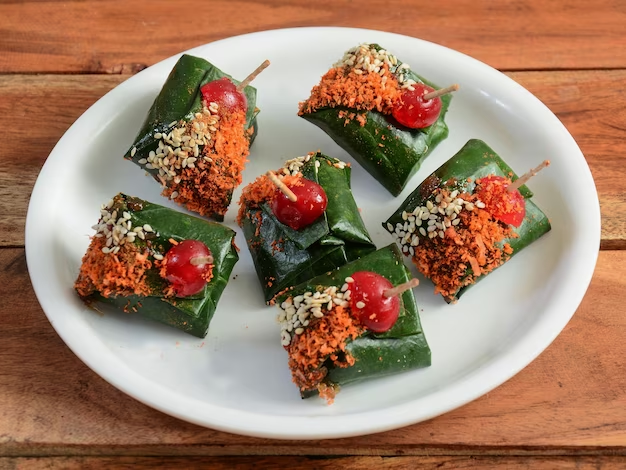The Paan
#India’s No.1 Franchise Model Of Hygenic, Delicious & Tasty Paan
About Paan
Paan, an Indian after-dinner treat that consists of a betel leaf (Piper betle) filled with chopped betel (areca) nut (Areca catechu) and slaked lime (chuna; calcium hydroxide), to which assorted other ingredients, including red katha paste (made from the khair tree [Acacia catechu]) may be added. Paan is served folded into a triangle or rolled, and it is spat out or swallowed after being chewed. It dates to ancient times and originated in India before becoming popular in other Asian countries. Although it is sometimes used as a palate cleanser and digestive aid, paan often acts as a caffeinelike stimulant and is addictive. It can result in tooth and gum decay, and the areca nut has been linked to certain cancers.
There are several general types of paan, including meetha (sweet) paan and tambaku (tobacco) paan; the latter contains chewing tobacco. Flavoured paan has become popular in India, with varieties mirroring the endless flavours of ice cream, including mango, cola, pineapple, strawberry, and chocolate; these are combined with more traditional ingredients, such as coconut, aniseed, cardamom, dried dates, and mukhwas. Paan made with the latter, which are made from seeds and nuts, can serve as a mouth freshener.
In the 21st century paan became a growing concern to health officials. Not only were various diseases connected with it, but paan was also considered a public nuisance when users spit the resulting brick-red saliva onto sidewalks. Various governments undertook efforts to ban or limit sales of paan, especially paan containing tobacco. In addition, the spitting of paan juice in public has drawn fines in certain areas.
We Love To Serve Varieties Of Paan.
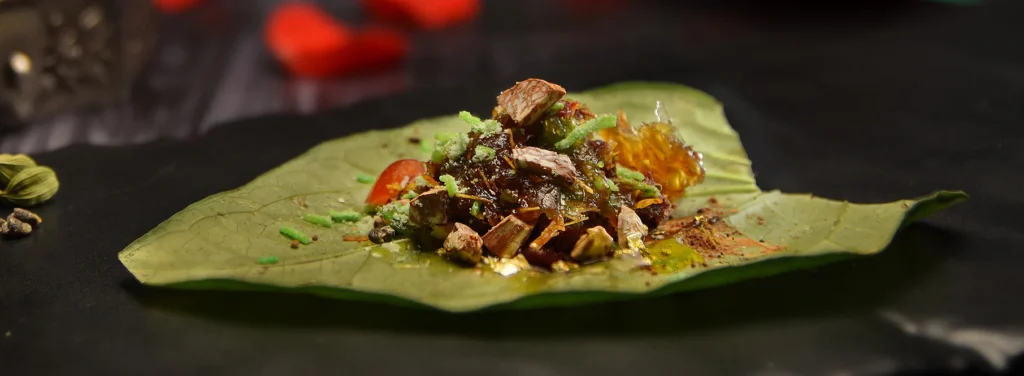
Metha Paan
Paan is an Indian delicacy made from betel leaves and it is eaten with various fillings put on top, often as a mouth freshner. The leaf is wrapped up and chilled prior to serving. The version with gulkand (rose jam) is called as meetha paan.

Banarasi Paan
Paan is regarded as auspicious in Varanasi. What makes a leaf softer than any other is how it is treated in Varanasi, a process known as pakana, which literally translates to ‘cooking’ but actually refers to the leaf’s ripening. Banarasi paan dissolves in the mouth for this reason.
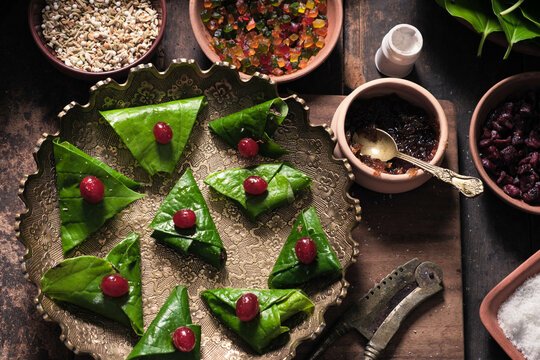
Madras Paan
It consists of betel leaves, coconut powder, sweetened rose petals, clove, fennel seeds, katha paste, and areca nut. Paan Shops in Chennai provide a wide range of paan flavours that can be customised based on the customer’s preferences.
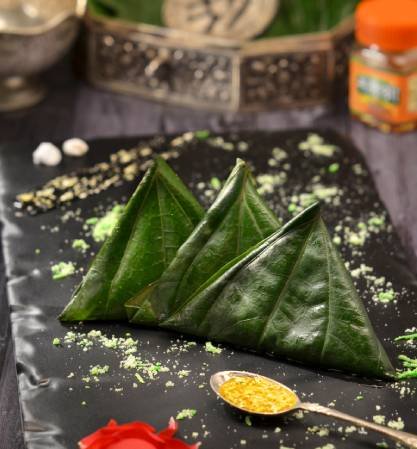
Calcutta Paan
Delightful composition of Betel Leaves, Sweetened Rose Petals Paste, Fennel Seeds, Coriander Seeds, Dry Dates, Cardamom. Traditional Indian sweet dish.

Dry Fruit Paan
Dry Fruit Paan is a traditional Indian mouth freshener made with a mixture of dry fruits, gulkand (rose petal jam), and various aromatic spices.
Benefits Of Eating Paan
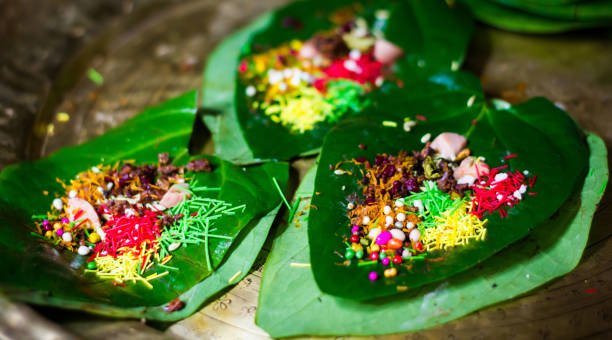
Betel leaves may have numerous health benefits and some of the potential betel leaf uses are as follows:
1. Potential use of betel leaves for headache
Betel leaves may have cooling and analgesic (relieve pain) properties. It may be used to relieve pain from severe headaches.1 Further studies on animals and humans are required to check the effect of betel leaves on headaches. If you experience a prolonged headache or unbearable pain, you must consult your doctor.
2. Potential use of betel leaves for cancer
Betel leaves may have anti-cancer properties and may protect the body against cancer. Studies showed that phenolic-related compounds in betel leaf extract may possess the capacity to inhibit the growth of cancerous cells.1 However, further studies are required to check the use of betel leaves on cancer. Cancer is a dangerous disease; therefore, you must get proper treatment instead of self-medicating.
3. Potential use of betel leaves for gastric ulcers
Betel leaves may be used in gastric ulcers due to their gastroprotective properties. Due to their antioxidant characteristics, betel leaves may increase enzymatic activity which may be advantageous for gastric ulcers. Betel leaves may increase the mucus content on the stomach lining and inhibit the volume of gastric acid, thereby acting against gastric ulcers.1 However, further studies on humans are required to check the activity of betel leaves for gastric ulcers. You must get proper treatment instead of self-medicating if you have painful ulcers over time.
4. Potential use of betel leaves for diabetes
There may be a possible betel leaf health benefit for diabetes. Studies on rats showed that betel leaves might decrease blood sugar levels.1 However, further studies are required to evaluate the activity of betel leaves for diabetes. If you are a diabetic patient, you must be diagnosed with diabetes and consult a doctor for proper treatment in case of high blood sugar levels.
5. Potential use of betel leaves for allergies
Betel leaves may be used in case of allergies and in vitro studies were done on human lung epithelial cell lines to check the production of allergic mediators by mast cells. The results suggested that the production of allergy mediators may be inhibited by betel leaves. Allergic mediators are biochemical substances in the body that are produced in response to allergens and show allergic symptoms.1 Further studies on humans are required to evaluate the action of betel leaves against allergies. If you have an allergic reaction, you must consult your doctor.
Our Features
Best Quality
Made with hygiene
Only natural ingredients

Unique delicious taste
Wide range of products
Excellent Support System
Get Franchises
Our Franchises
We provide the franchise of this world-famous Beeda Paan to entrepreneurs to set up their own business to be the authorized outlet of Beeda Paan
You can earn 3 types of income:
Retail Income
Online Delivery Income
Event Booking Income
